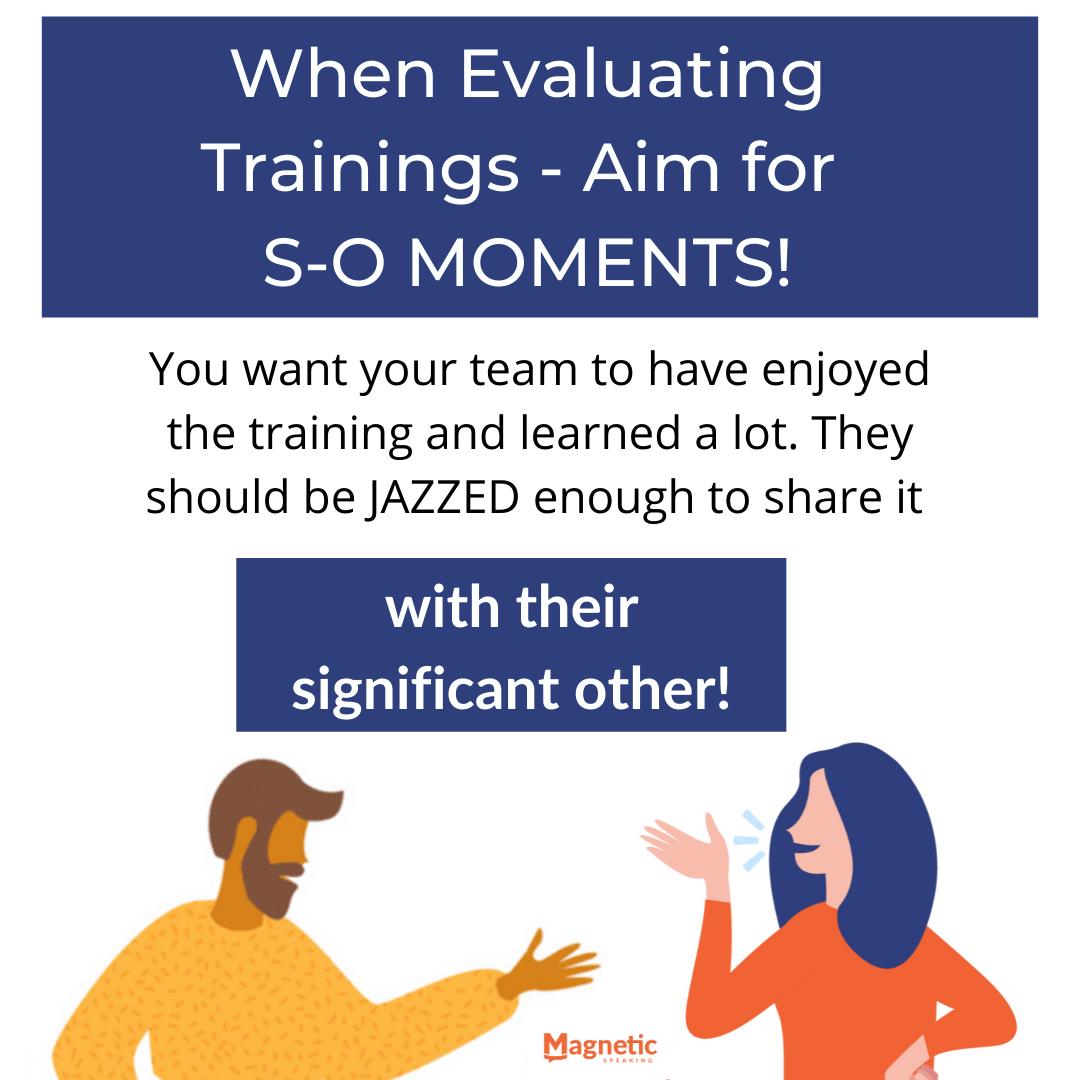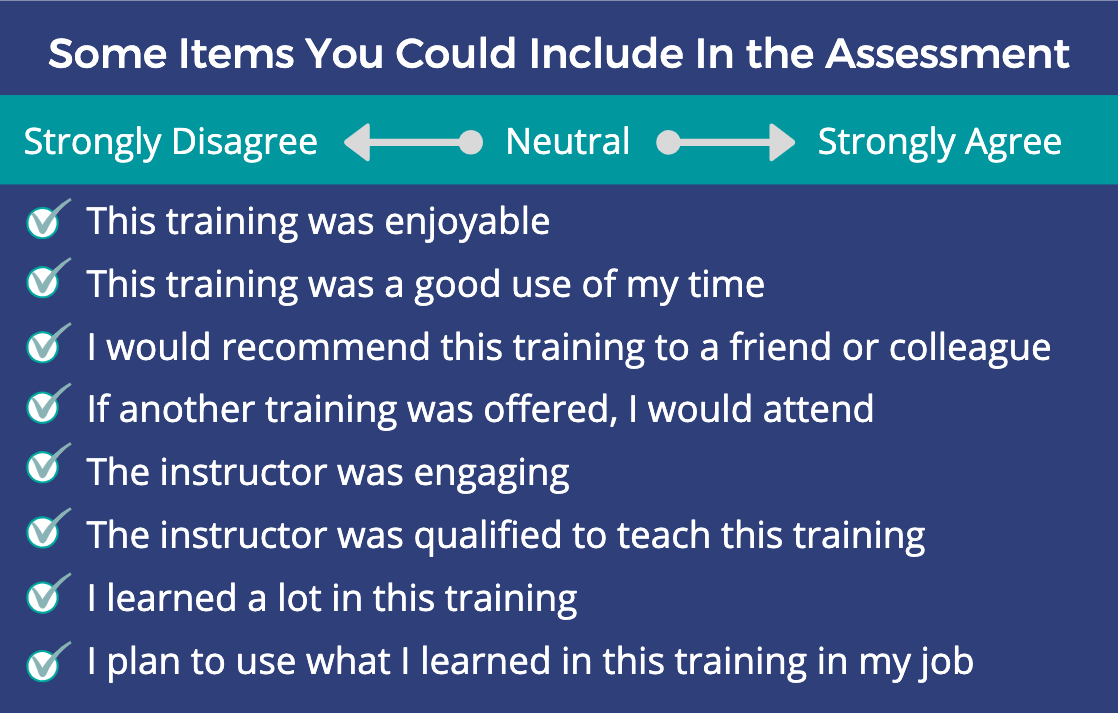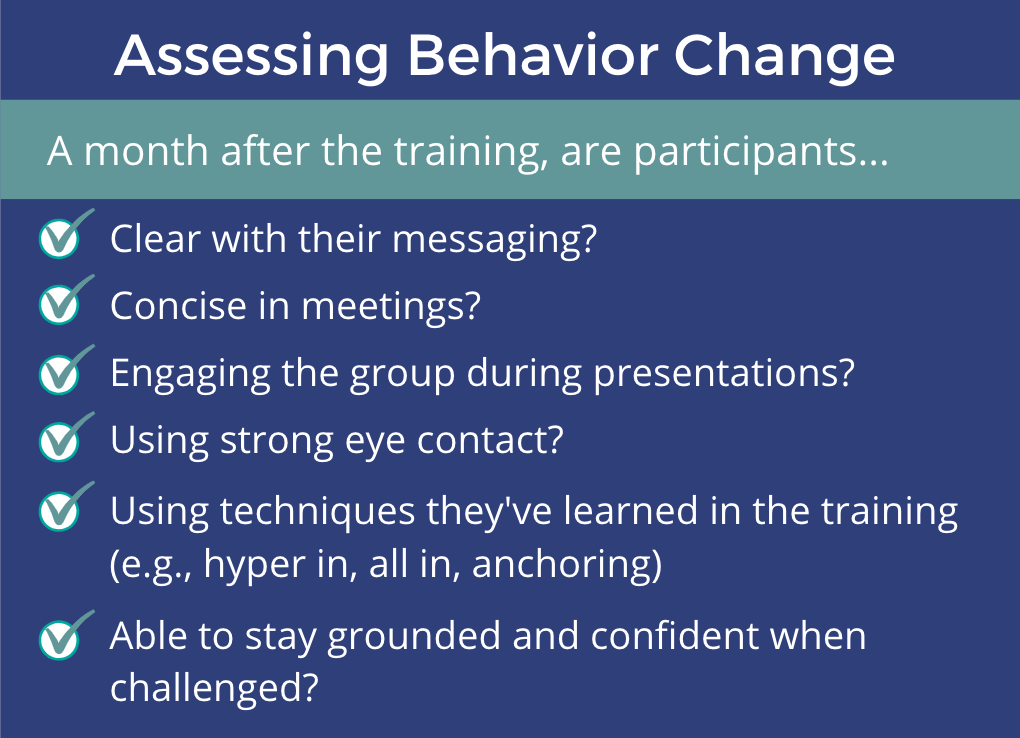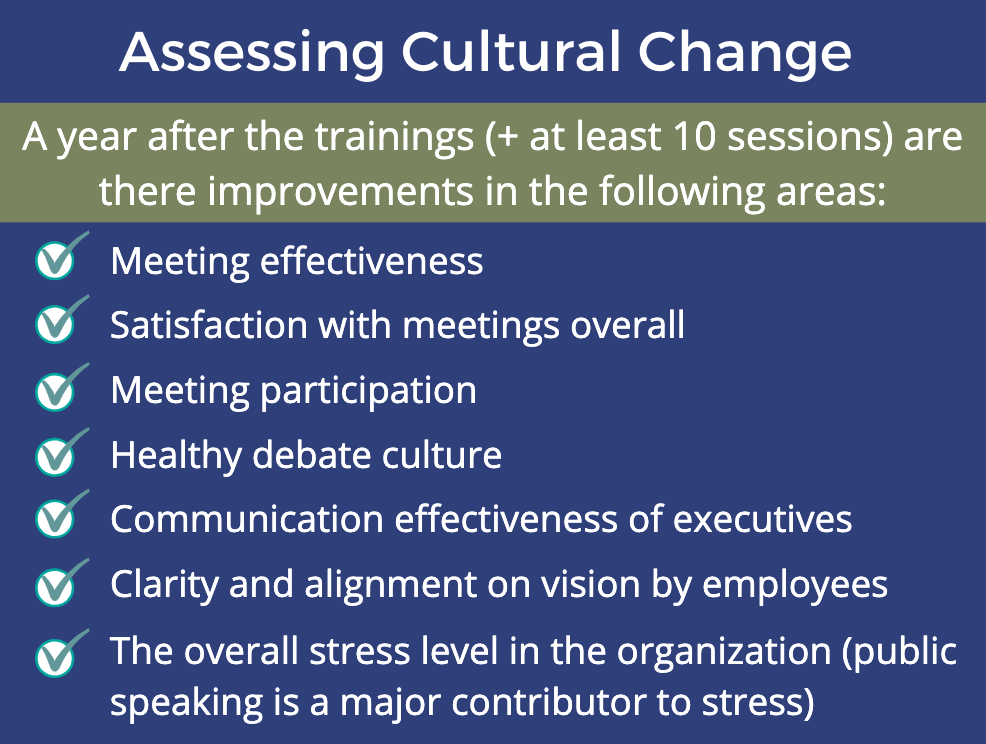If you offer any training to your team, you want to ensure it’s worth the investment. Ideally, your team enjoyed the experience, but they’re also delivering improved results.
So how do you know if it worked? In this article, we have 3 tiers that you can independently assess to make sure you got the most bang for your buck.

The first tier is assessing both the “intellectual value” and overall experience of the training. It’s what we call “significant-other moments” or S-O moments. The participants are so excited about what they learned that they go home and tell their SOs about it!

If the training had high intellectual value, then the participants will have tangible frameworks, concepts and techniques that they can talk about. They should have a new conceptual understanding of the subject and feel like it was relevant to their job or career. This is the more cognitive aspect of the training that’s fundamental to learning and application.
The other side is the overall experience of the training. This is more feelings-based, but just as important. Did the participants enjoy their experience and feel it was a good use of their time? Were they engaged and having fun? (Yes, it’s possible to have a training be fun!) Did they like the instructor and find them qualified? These feelings and memories will be stronger right after the training, so it’s crucial that you get an evaluation form out to the participants right after the event or within 24 hours. And it doesn’t have to be complicated!
We suggest using a basic Likert Scale (strongly disagree – strongly agree). Here are some statements you can include:

Overall, you want the training to satisfy this first tier. But that’s not enough. I know I’ve been to plenty of trainings where I feel good about it and can even rattle off concepts, but I don’t change my habits or apply it in a tangible way over the long term. That’s where tier 2 comes in.

After evaluating the training at an intellectual level, the next stage is to watch for behavioral change that comes from it in the following weeks. This can be evaluated by observing the participants in live-work scenarios and noticing if they are applying some of what they have learned.
Are you seeing a difference in the way the employees behave after the training? Are they using the skills taught in the training? Are they using techniques in their daily jobs?
For example, if the training was a public speaking training, then the following are examples of how you could assess behavioral changes among the participants:

These types of questions are often related to a needs assessment. Ideally, you use a needs assessment before the training, and then you can use it after to measure behavioral changes. If you’re looking to do a public speaking training and haven’t already used the needs assessment you can go here and fill it out. Then, after employees participate in the training, use the same questions (the questions that pertain to the area of the training you offered) to assess if participants are using the tools in their daily work life.
Hopefully, you’re seeing lasting behavior changes following the training. You can either observe this yourself or check in with other leaders to see if they or anyone else notices changes.
Ultimately, that’s how you know a training was valuable – that you’re seeing lasting results weeks, months (and hopefully beyond that) after the initial training.
And just remember that one training may not be enough to create concrete lasting change since skill development takes repetition. To help your team the most, plan to offer a variety of learning opportunities focusing on various disciplines to help strengthen the desired skillset.

Good trainings improve people, but great trainings improve organizations. If you provide training for your employees, you will enjoy better performance, satisfaction, and loyalty from the individuals who participated. Sometimes that’s good enough—however, it’s even better to strive for more.
If the training infuses the company culture, then you will see organizational benefits. For example, you might find less overall stress in the organization, less conflict, more participation in town hall meetings, and more engagement.

Great training empowers employees with new skills and updates the company culture. The best way to assess for cultural improvements is to do a cultural assessment before and after the training. It takes time to notice cultural improvements and we recommend that you do the post-assessment a year following the trianing. Many HR leaders we work with do cultural assessments on an annual basis.
Different trainings will have different cultural impacts. For example, if you are assessing the effectiveness of public speaking training then you might want to assess the following:

Conclusion
I hope you see that the impact of good training extends from day-to-day employee experience to their behavior and all the way up to company culture. A great way to measure the success of a training is to conduct a post-training assessment for each of 3 levels, and I shared with you ideas and starting points for each assessment level. If you need help formulating a post-training assessment for public speaking or communication at your organization, please reach out to us.




